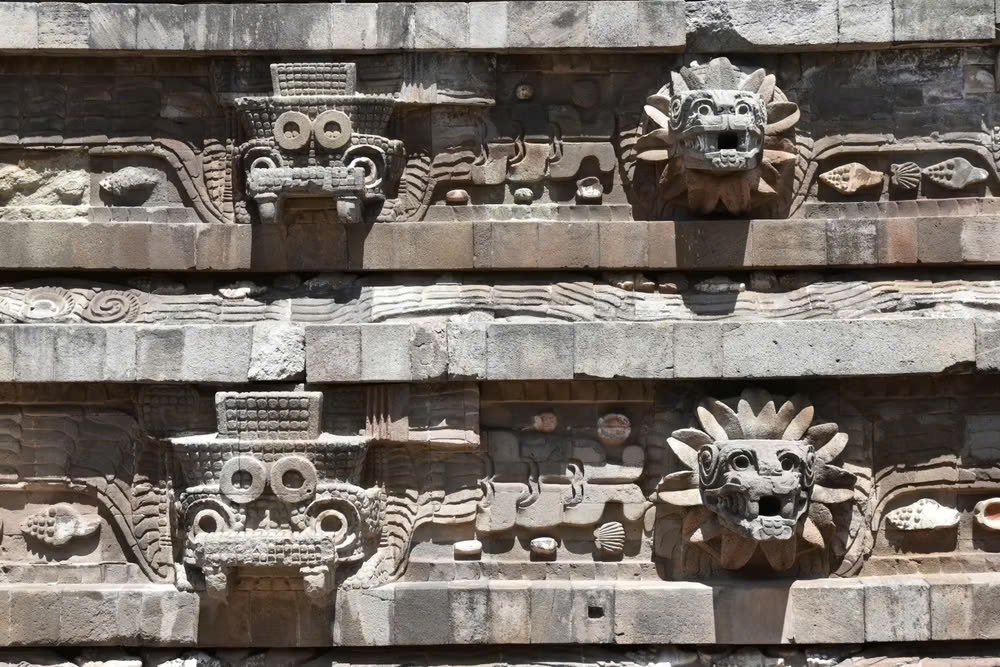A Monument to Time and Creation
Deep within the ancient city of Teotihuacan, a breathtaking structure has fascinated historians and archaeologists for centuries. Known as the Temple of the Feathered Serpent, or the Pyramid of Quetzalcoatl, this architectural masterpiece is more than just a place of worship—it functions as a cosmic clock, chronicling the cycles of creation and the passage of time.
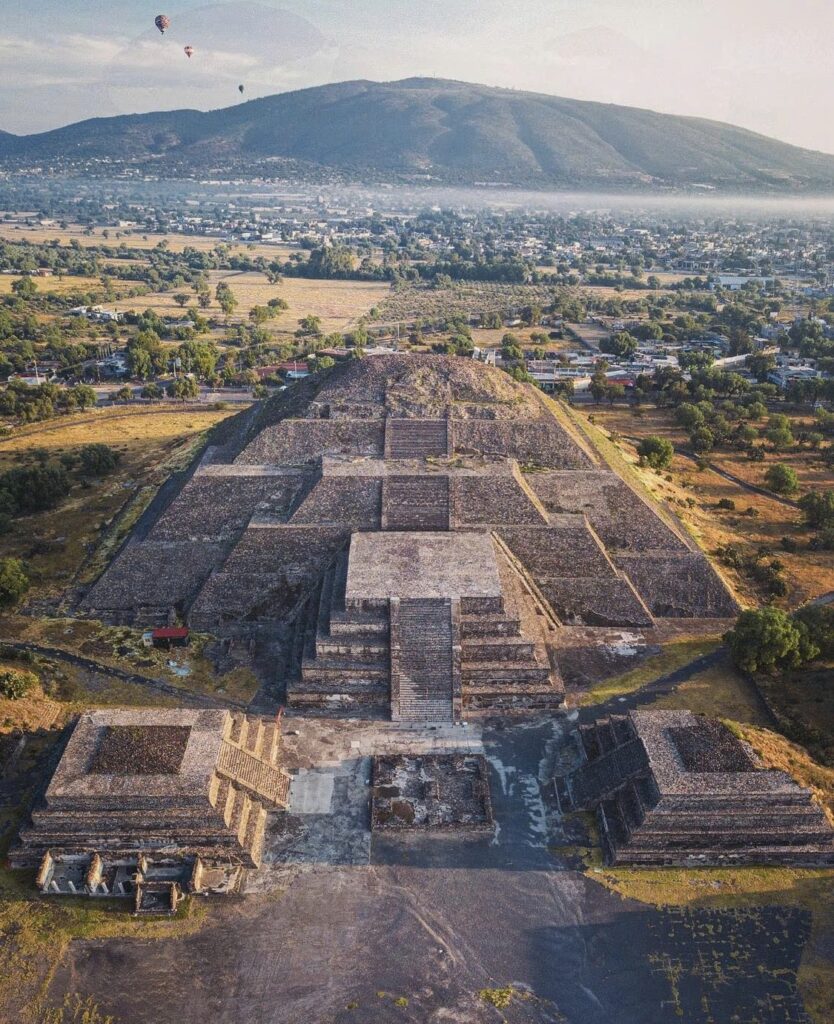
The Serpent’s Tale
Approaching the temple’s eastern façade, visitors are greeted by intricately carved stone heads, crafted in the 3rd century. These striking sculptures alternate between Quetzalcoatl, the feathered serpent deity, and an enigmatic crocodilian figure. Between them, bas-relief carvings depict undulating serpent forms adorned with rattlesnake details, reinforcing the site’s deep symbolic significance.
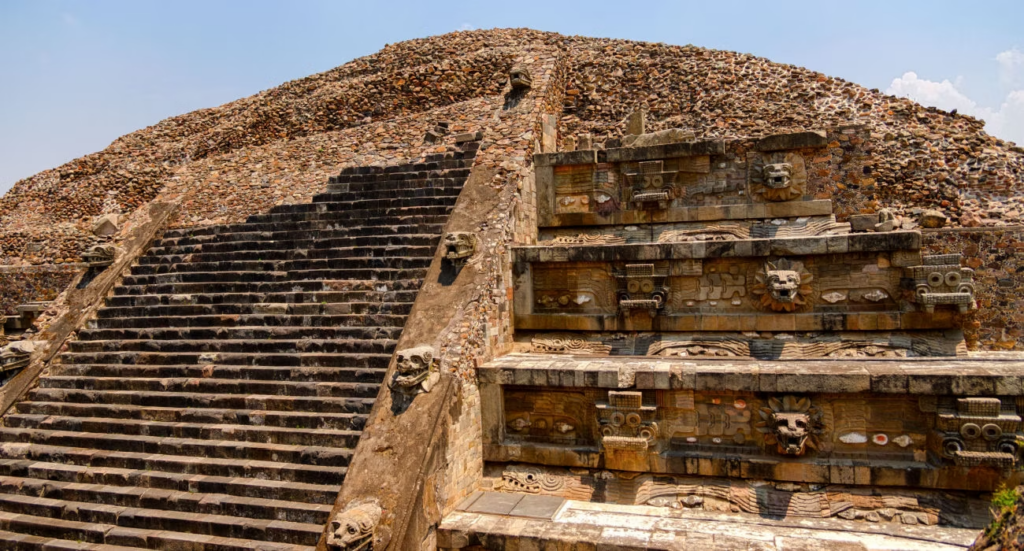
Deciphering the Sacred Symbolism
Unlike many civilizations, the Teotihuacanos left no written records in the traditional sense. Instead, they conveyed their worldview through an elaborate system of pictographs and ideograms, encoding complex spiritual and cosmic knowledge into their art and architecture.

Quetzalcoatl: The Divine Feathered Serpent
The feathered serpent heads are rich with layered meaning. The feathers symbolize both flowering crops and solar rays, linking Quetzalcoatl to fertility and celestial power. A distinctive curling eyebrow represents duality, infinity, and the swirling cosmos, underscoring the deity’s role as a bridge between earth and sky.
The Crocodilian Enigma
The crocodile-like sculptures continue to puzzle scholars. Some identify them as Cipactli, a primordial crocodile from Aztec mythology, while others see hints of Xiuhcoatl, the Fire Serpent, a divine force believed to guide the sun’s journey across the heavens.
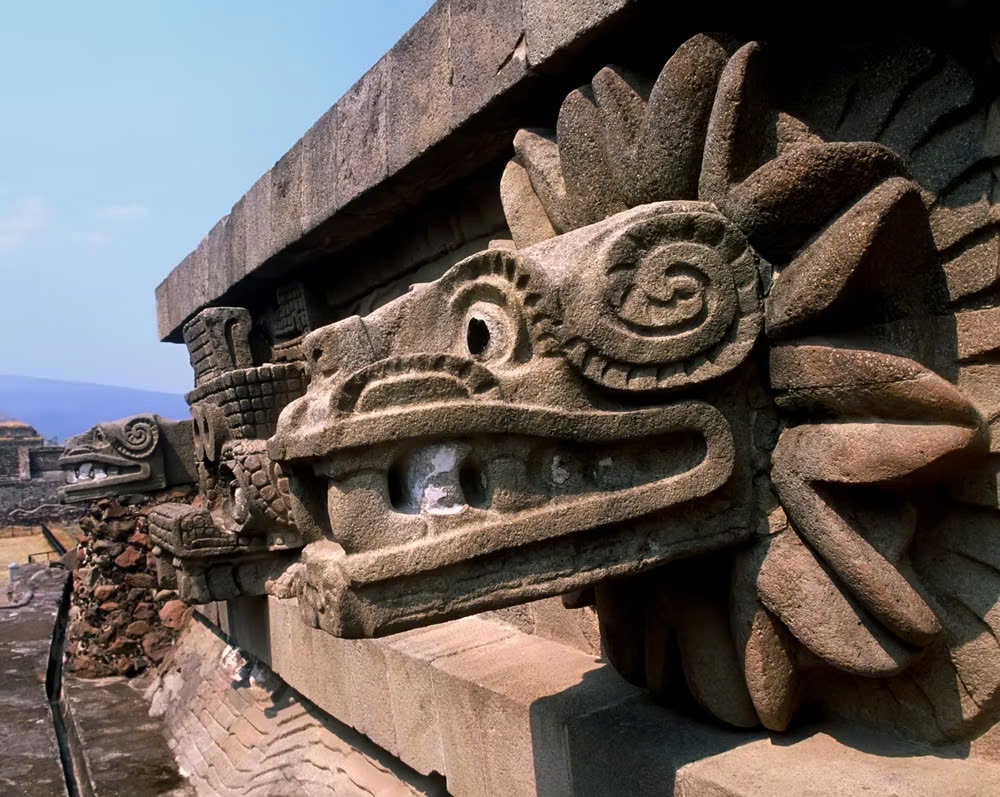
A Cosmic Shrine Beneath the Pyramid
Beneath the temple lies an astonishing subterranean complex. A tunnel lined with hundreds of pyrite-covered clay spheres creates the illusion of a star-filled passage, leading to three sacred caves. This enigmatic space may have served as a sanctuary of creation, possibly even playing a role in royal birth rituals to reinforce divine ancestry.
The Great Timekeeper of Teotihuacan
The temple’s structure is intrinsically linked to the sacred calendar. Scholars estimate that its four façades once featured 260 serpent heads, mirroring the 260-day ritual year of Mesoamerican tradition. A small gap between the carved teeth may have functioned as a slot for offerings or date markers, allowing priests and observers to track the passage of time.
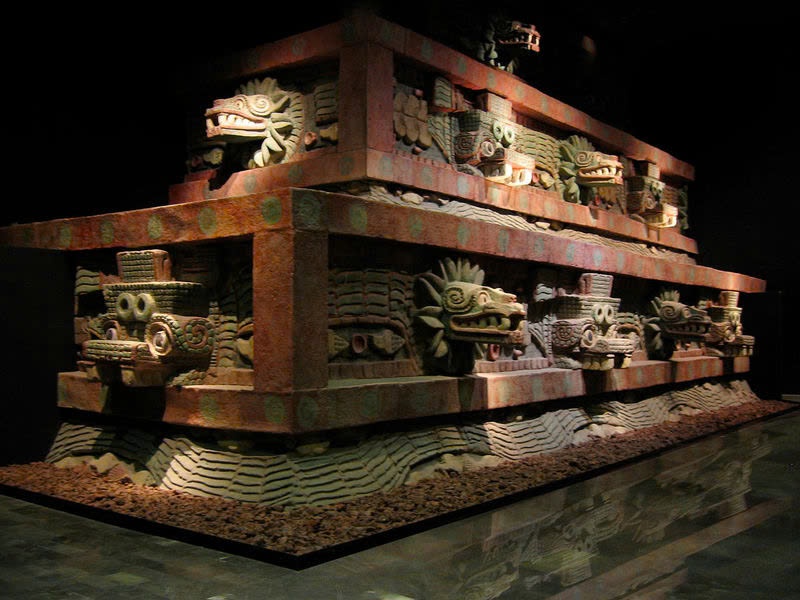
The Ciudadela: A Stage for Grand Ceremonies
The Temple of the Feathered Serpent is nestled within the Ciudadela, a vast ceremonial complex large enough to hold Teotihuacan’s entire population. Its 13 surrounding structures likely represent the 13-day weeks of the sacred calendar, suggesting that this site was a focal point for elaborate rituals honoring the gods and marking celestial cycles.
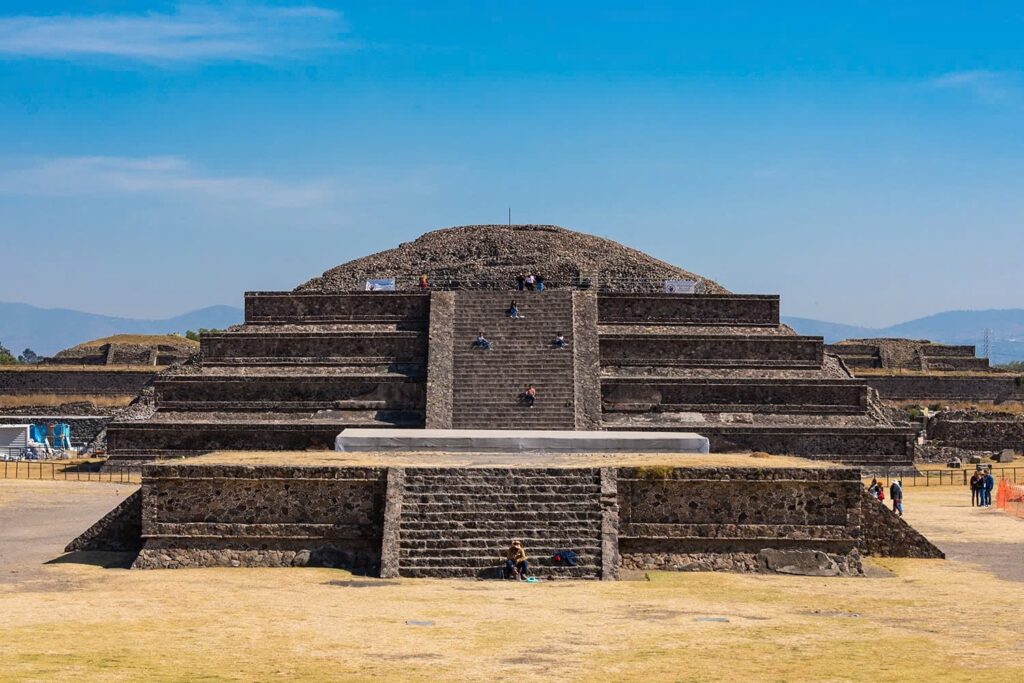
A Legacy Written in Stone
The Temple of the Feathered Serpent stands as a testament to the ingenuity and cosmic wisdom of the Teotihuacanos. More than just a temple, it is a monumental clock, a sacred text, and a bridge between the material and spiritual worlds. As ongoing excavations continue to reveal its secrets, this ancient masterpiece remains a profound link to a civilization that saw time, space, and divinity as one interconnected whole.
